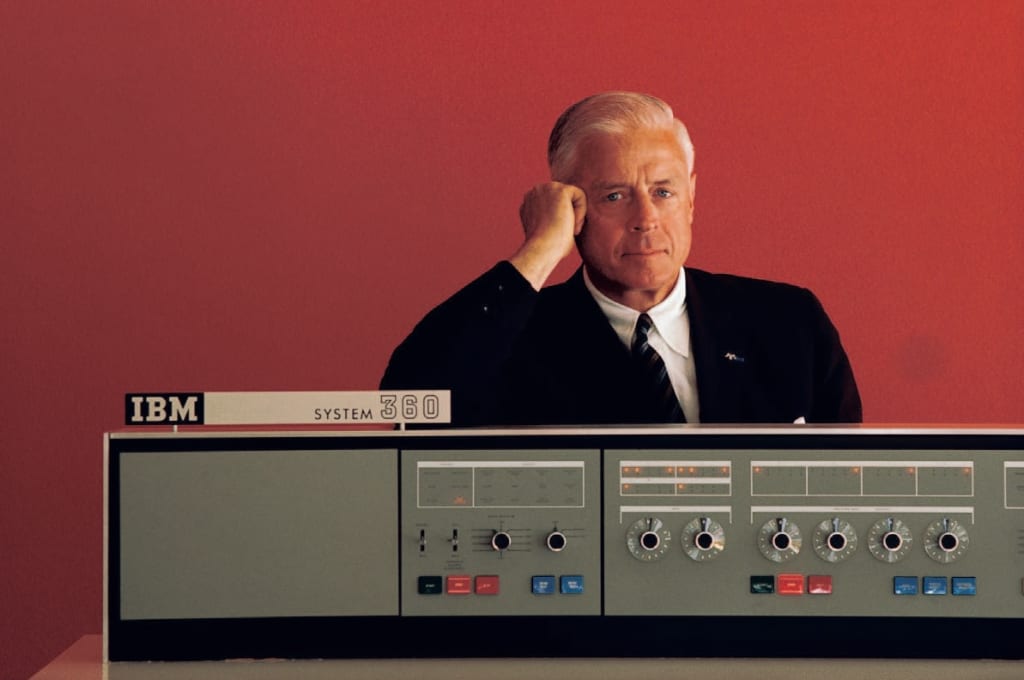The Legacy of Thomas Watson Jr.
A Tale of IBM's Remarkable Evolution

In the early 20th century, Thomas Watson Jr., the son of America's highest-paid executive, found himself trapped in the looming shadow of his father, the man who had transformed IBM into a household name with its near-monopoly on punch-card tabulating equipment. While the world expected him to follow in his father's footsteps, Thomas Watson Jr. longed for personal independence. His journey from reluctant heir to the man who would steer IBM into the computer age is a compelling story of transformation and business evolution.
"The Greatest Capitalist Who Ever Lived," a biography by Ralph Watson McElvenny and Marc Wortman, chronicles Thomas Watson Jr.'s remarkable ascent to the presidency of IBM in 1952, at the tender age of 38. It culminates with IBM's groundbreaking System/360 series, a technological leap that propelled the company to become the most valuable publicly traded corporation in America during the 1960s. The narrative is rife with boardroom intrigue, familial conflicts, and high-stakes technological gambles.
One intriguing aspect of this biography is the authors' willingness to present both the positive and negative facets of Thomas Watson Jr.'s character. They delve into his complex personality and private life, revealing a man who could inspire terror with his rages, pit individuals and company divisions against each other, and demand unwavering obedience at home. Despite his relentless pursuit of business knowledge, Thomas Watson Jr. never fully shed his spoiled-rich-kid persona, indulging in extravagant impulse purchases and secretive extramarital affairs.
The title of "The Greatest Capitalist Who Ever Lived" may be a tad exaggerated, considering IBM's significant reliance on government contracts and subsidies during its early years. The authors highlight that IBM's initial success in the 1920s and 1930s was largely fueled by government contracts, including those with the Census Bureau and the Social Security Administration. These contracts, combined with the sale of punch cards to equipment lessees, were instrumental in the company's early success. Furthermore, the book reveals how government research and development contracts played a pivotal role in IBM's technological advancements.
One of the glaring omissions in this biography is the extensive support IBM received from its work with the National Security Agency (NSA). The NSA contracts provided IBM with a substantial source of revenue and contributed to breakthroughs in data processing and storage hardware. The authors fail to adequately explore this relationship, missing an opportunity to shed light on the intertwined history of IBM and government intelligence agencies.
While Thomas Watson Jr.'s decision to bet the company on the System/360 series is a climactic moment in the book, the authors somewhat gloss over the question of whether this success was due to Watson's leadership or IBM's pre-existing market dominance. IBM's stronghold on the business market for data services and its leasing model, which gave them an edge in understanding customer needs, allowed them to overcome technical missteps that would have crippled competitors.
In the rapidly evolving field of computing, IBM's corporate culture and inability to innovate in a competitive environment eventually led to difficulties. By the 1990s, the company faced staggering losses and announced its first layoffs in seven decades. Thomas Watson Jr.'s legacy, as a result, should perhaps be framed as that of "The Luckiest Capitalist Who Ever Lived," who benefited from fortuitous circumstances more than exceptional leadership or innovation.
"The Greatest Capitalist Who Ever Lived" offers a comprehensive look at the life of Thomas Watson Jr. and the transformation of IBM into a technological powerhouse. The narrative paints a vivid picture of a man caught between his father's immense legacy and his own desire for independence. The book provides a valuable glimpse into the evolution of a corporate giant in the 20th century, despite some missed opportunities to explore the full scope of IBM's history and Thomas Watson Jr.'s leadership.
About the Creator
Muhammad Mohsin
I'm a writer weaving words into worlds, an artist, singer, poet, storyteller and dreamer. Let's explore new dimensions together through the power of storytelling
Enjoyed the story? Support the Creator.
Subscribe for free to receive all their stories in your feed. You could also pledge your support or give them a one-off tip, letting them know you appreciate their work.






Comments
There are no comments for this story
Be the first to respond and start the conversation.